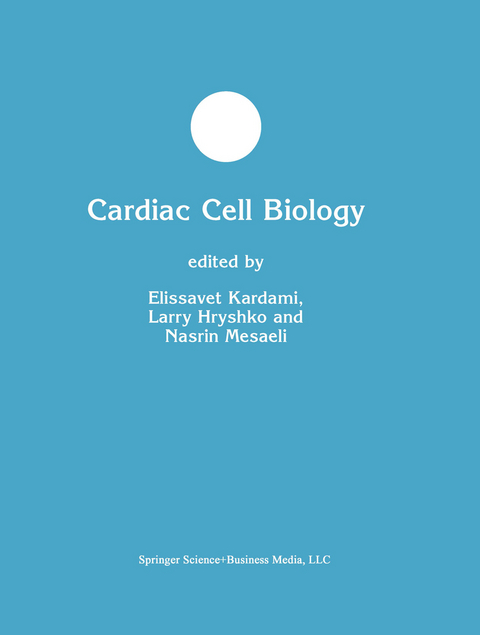
Cardiac Cell Biology
Springer-Verlag New York Inc.
978-1-4419-5324-7 (ISBN)
Cardiac cell biology has come of age.
Recognition of activated or modified signaling molecules by specific antibodies, new selective inhibitors, and fluorescent fusion tags are but a few of the tools used to dissect signaling pathways and cross-talk mechanisms that may eventually allow rational drug design. Understanding the regulation of cardiac hypertrophy in all its complexity remains a fundamental goal of cardiac research. Since the advancement of adenovirally mediated gene transfer, transfection efficiency is no longer a limiting factor in the study of cardiomyocytes. A limiting factor in considering cell transplantion as a strategy to repair the damaged heart is cell availability at the right time. Cardiac gap junctions, intercellular communication channels that allow electrical and metabolic coupling and play an important role in arrhythmogenesis are now understood to be exquisite sensors of cardiac change.
The reports in this volume incLude elegant studies that made use of cutting edge technological advances and many specialized reagents to address these issues.
Decoy calcium channel beta subunits modulate contractile function in myocytes.- Importance of Ca2+ influx by NA+/Ca2+ exchange under normal and sodium-loaded conditions in mammalian ventricles.- Compensated hypertrophy of cardiac ventricles in aged transgenic FVB/N mice overexpressing calsequestrin.- The myocardial protein S100A1 plays a role in the maintenance of normal gene expression in the adult heart.- The carboxy-tail of connexin-43 localizes to the nucleus and inhibits cell growth.- Porcine aortic endothelial cells show little effects on smooth muscle cells but are potent stimulators of cardiomyocyte growth.- Differential cytokine expression in myocytes and non-myocytes after myocardial infarction in rats.- Increased salt sensitivity secondary to leptin resistance in SHHF rats is mediated by endothelin.- Cloning and bacterial expression of postnatal mouse heart FGF-16.- An ischemic ?-dystroglycan (?DG) degradation product: Correlation with irreversible injury in adult rabbit cardiomyocytes.- Effects of glyburide (glibenclamide) on myocardial function in Langendorff perfused rabbit heart and on myocardial contractility and slow calcium current in guinea-pig single myocytes.- Metabolic phenotyping of the diseased rat heart using 13C-substrates and ex vivo perfusion in the working mode.- Increased glycolysis as protective adaptation of energy depleted, degenerating human hibernating myocardium.- Optimal conditions for heart cell cryopreservation for transplantation.- Different pathways for sodium entry in cardiac cells during ischemia and early reperfusion.- Comparison of connexin expression patterns in the developing mouse heart and human foetal heart.- Ischemia-induced dephosphorylation of cardiomyocyte connexin-43 is reduced by okadaic acid and calyculin A butnot fostriecin.- Gap junction remodeling and altered connexin43 expression in the failing human heart.- Alterations in protein kinase C isoenzyme expression and autophosphorylation during the progression of pressure overload-induced left ventricular hypertrophy.- CaM kinase II6C phosphorylation of 14-3-3? in vascular smooth muscle cells: Activation of class II HDAC repression.- Regulation of MAPK pathways in response to purinergic stimulation of adult rat cardiac myocytes.- Thyroid hormone and cardioprotection: Study of p38 MAPK and JNKs during ischaemia and at reperfusion in isolated rat heart.- Involvement of mitogen-activated protein kinases and reactive oxygen species in the inotropic action of ouabain on cardiac myocytes. A potential role for mitochondrial KATP, channels.- Index to Volume.
| Erscheint lt. Verlag | 3.12.2010 |
|---|---|
| Reihe/Serie | Developments in Molecular and Cellular Biochemistry ; 39 |
| Zusatzinfo | 40 Illustrations, color; 179 Illustrations, black and white; V, 194 p. 219 illus., 40 illus. in color. |
| Verlagsort | New York, NY |
| Sprache | englisch |
| Maße | 210 x 279 mm |
| Themenwelt | Studium ► 1. Studienabschnitt (Vorklinik) ► Physiologie |
| Naturwissenschaften ► Biologie ► Biochemie | |
| ISBN-10 | 1-4419-5324-8 / 1441953248 |
| ISBN-13 | 978-1-4419-5324-7 / 9781441953247 |
| Zustand | Neuware |
| Haben Sie eine Frage zum Produkt? |
aus dem Bereich


